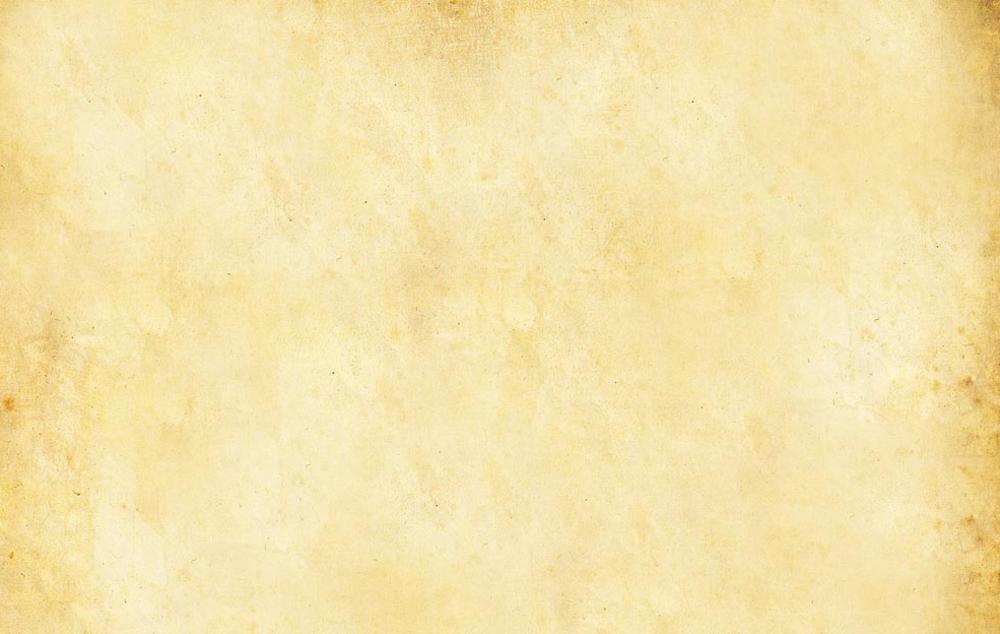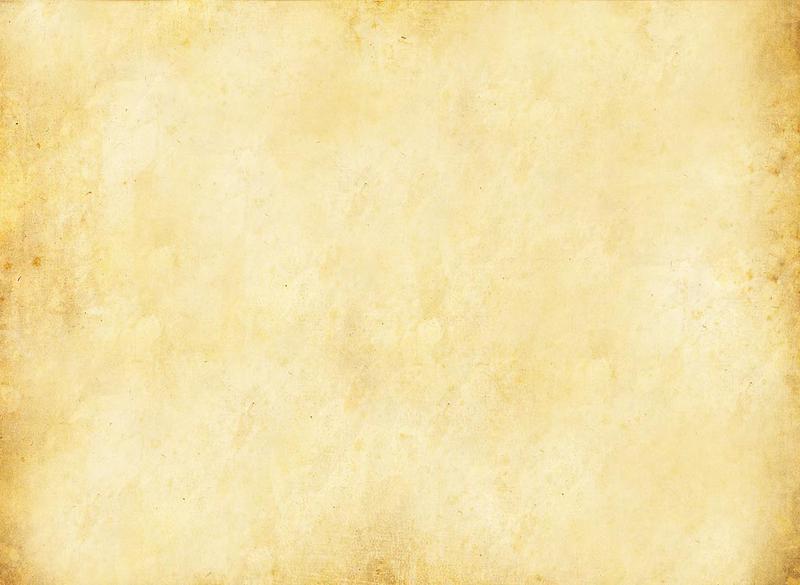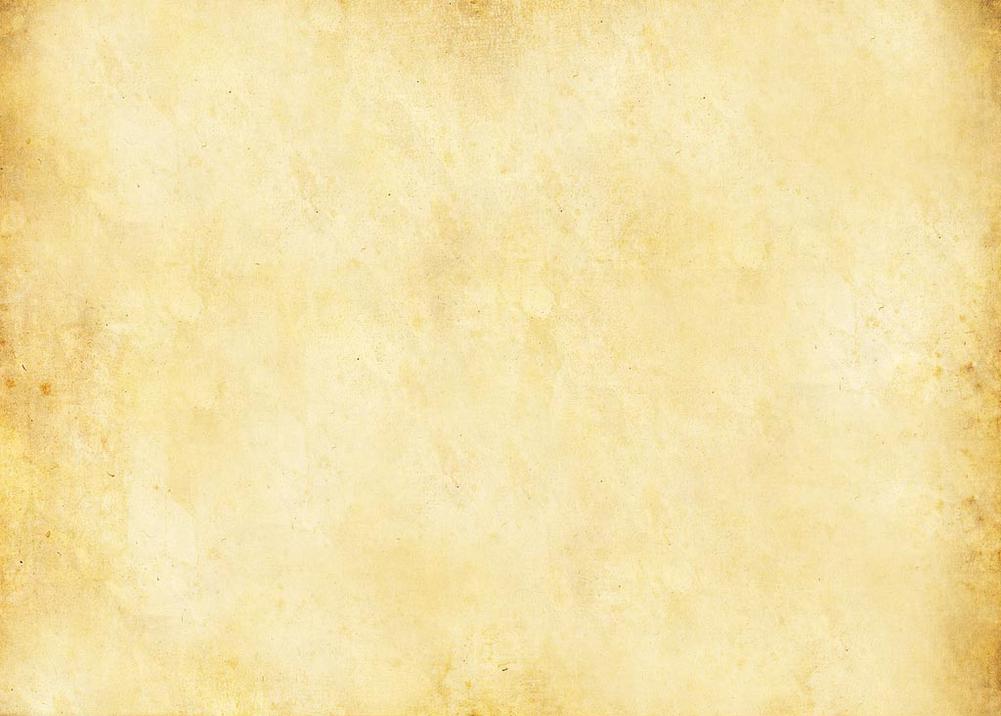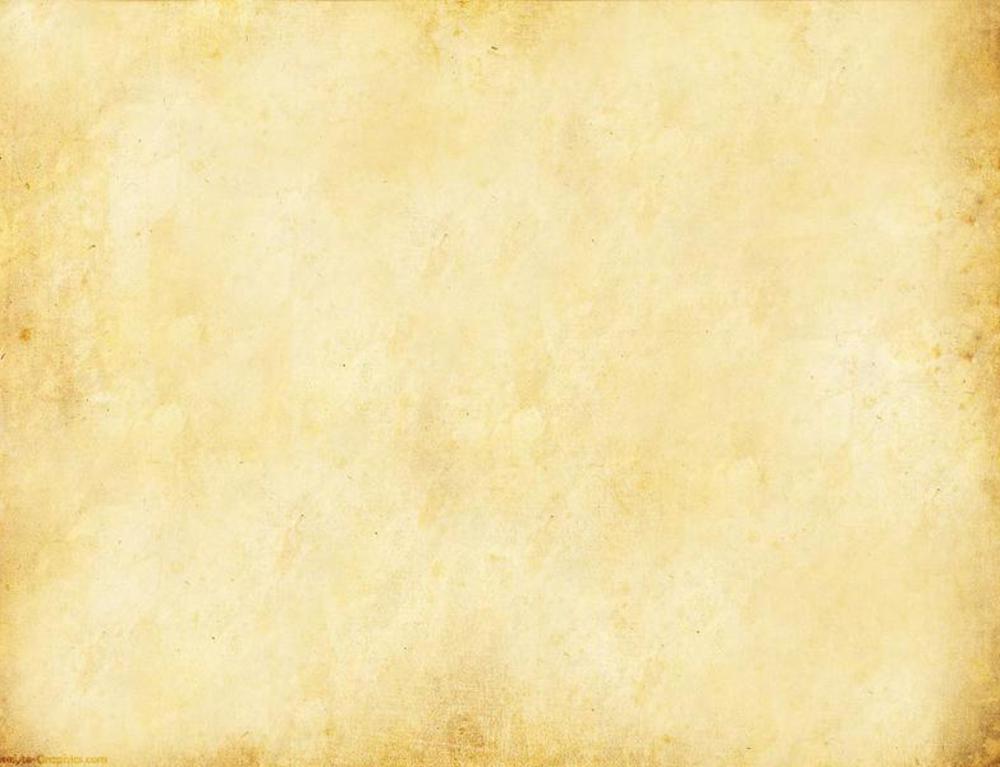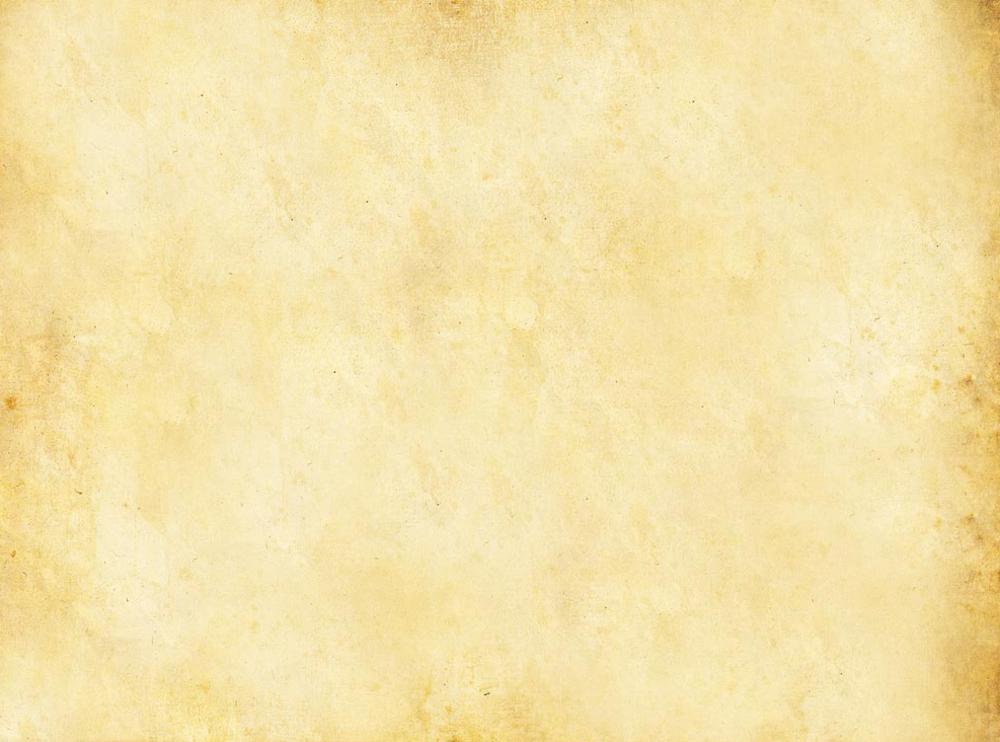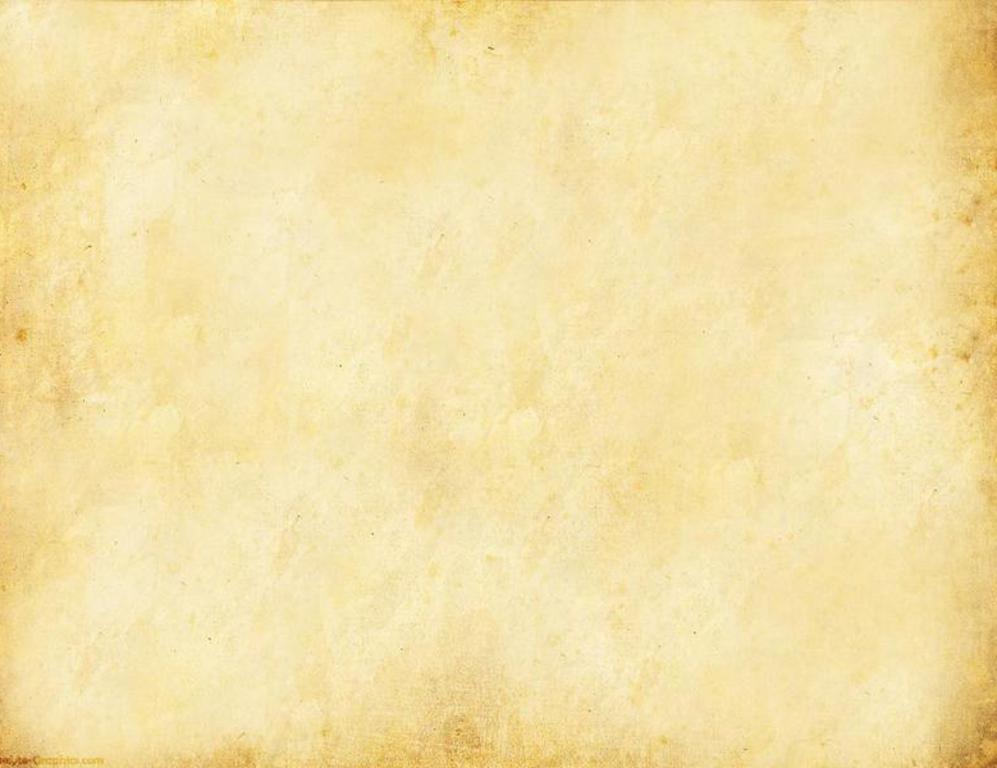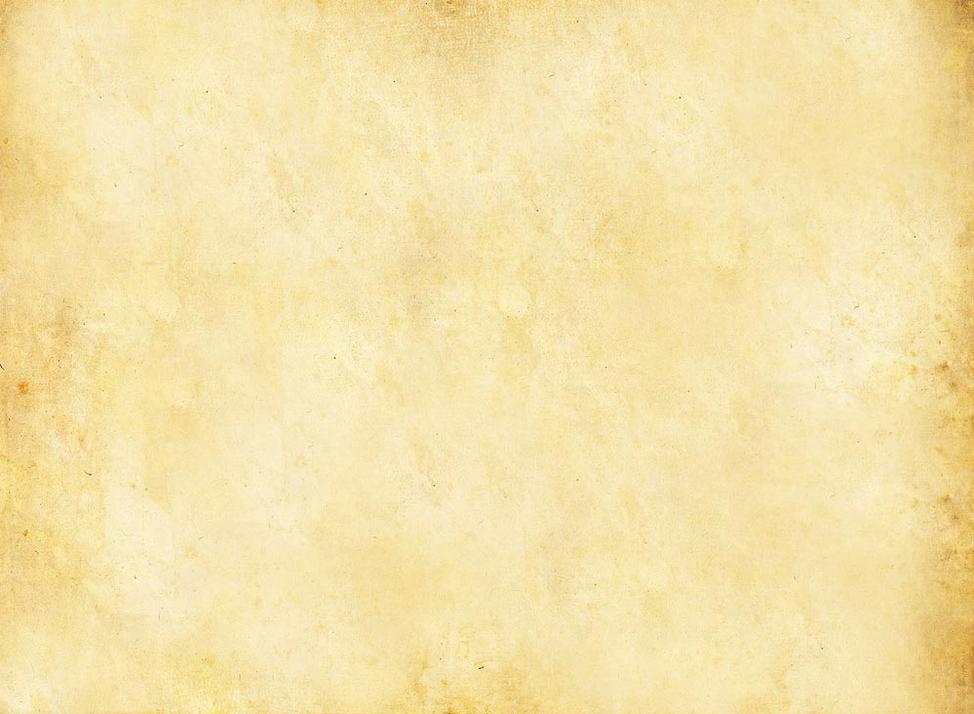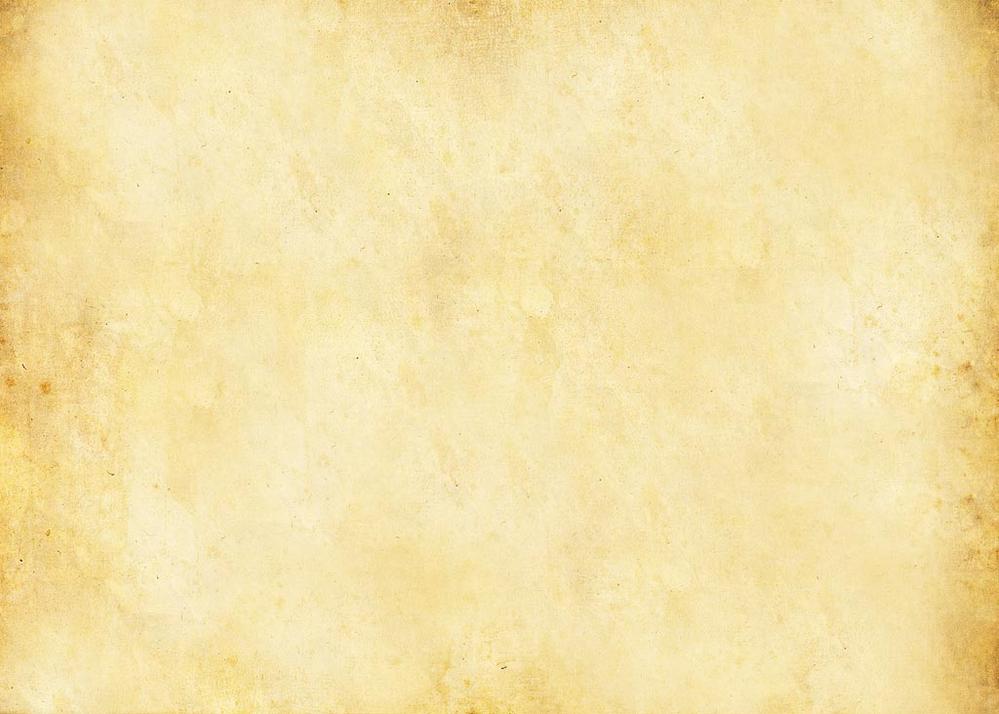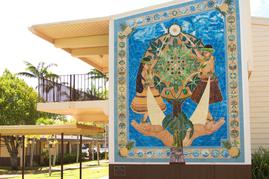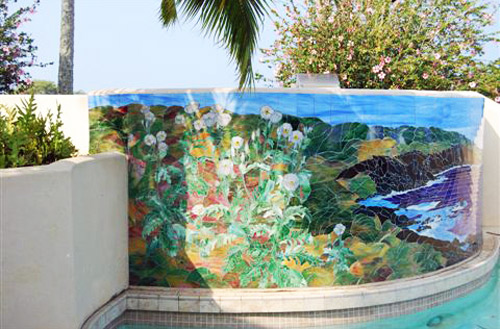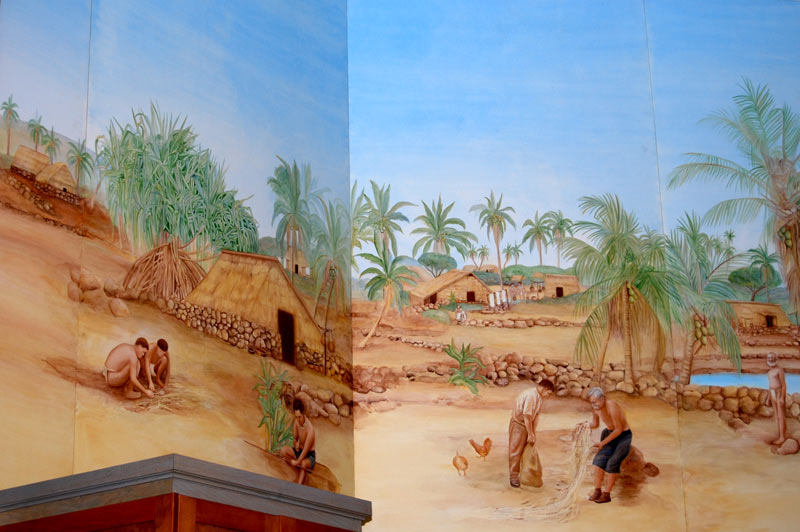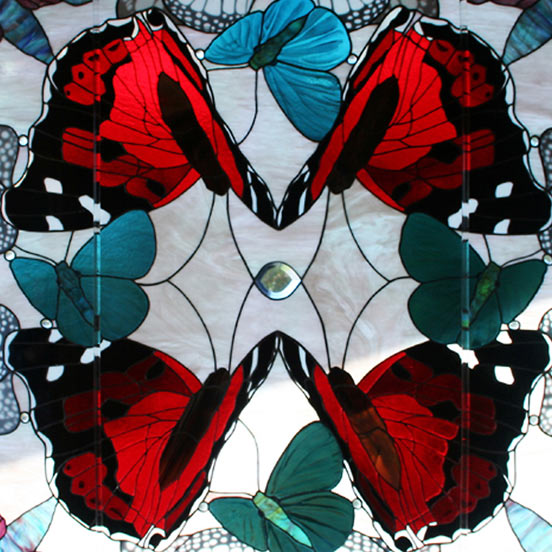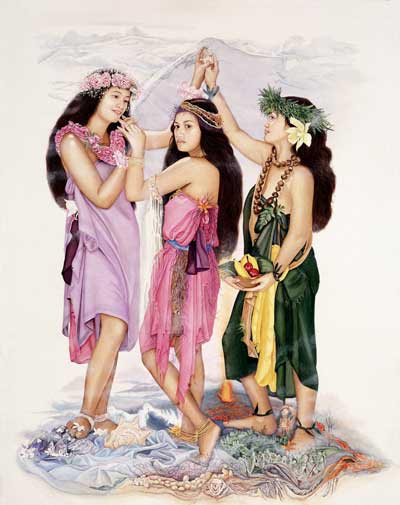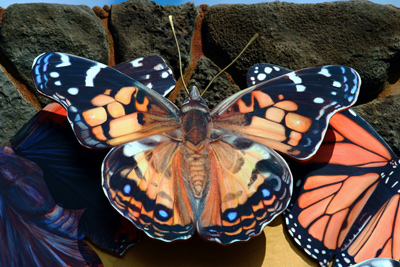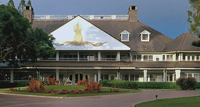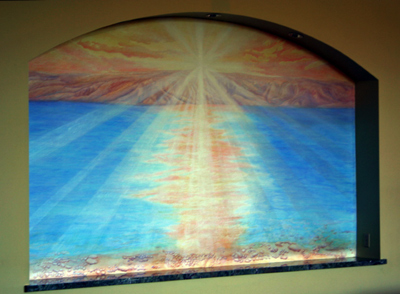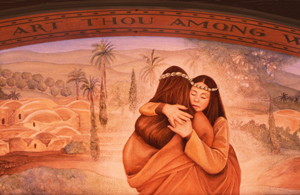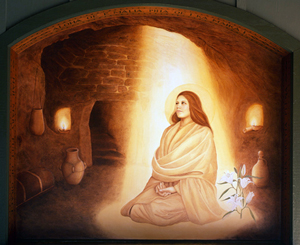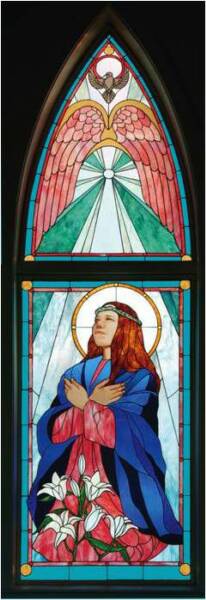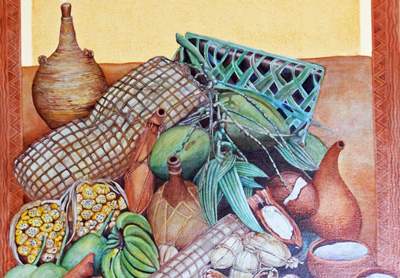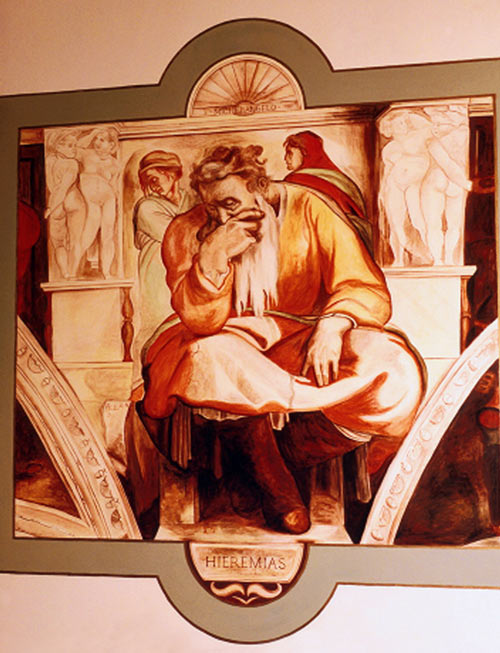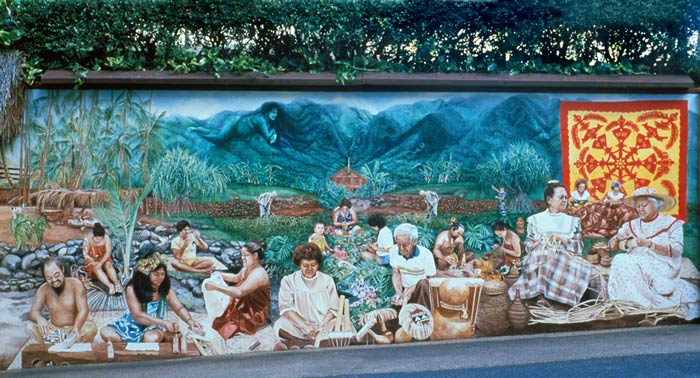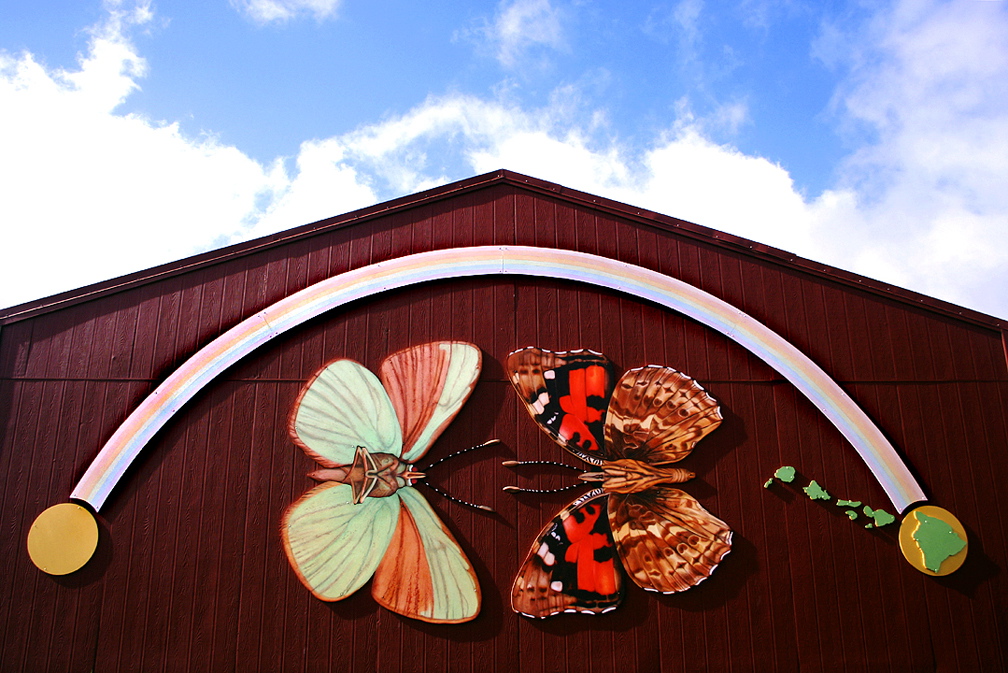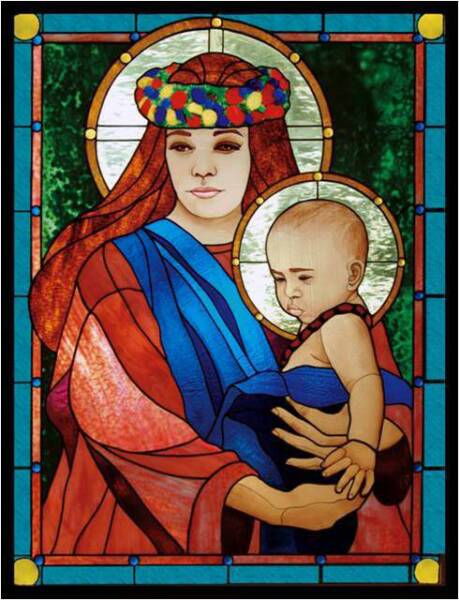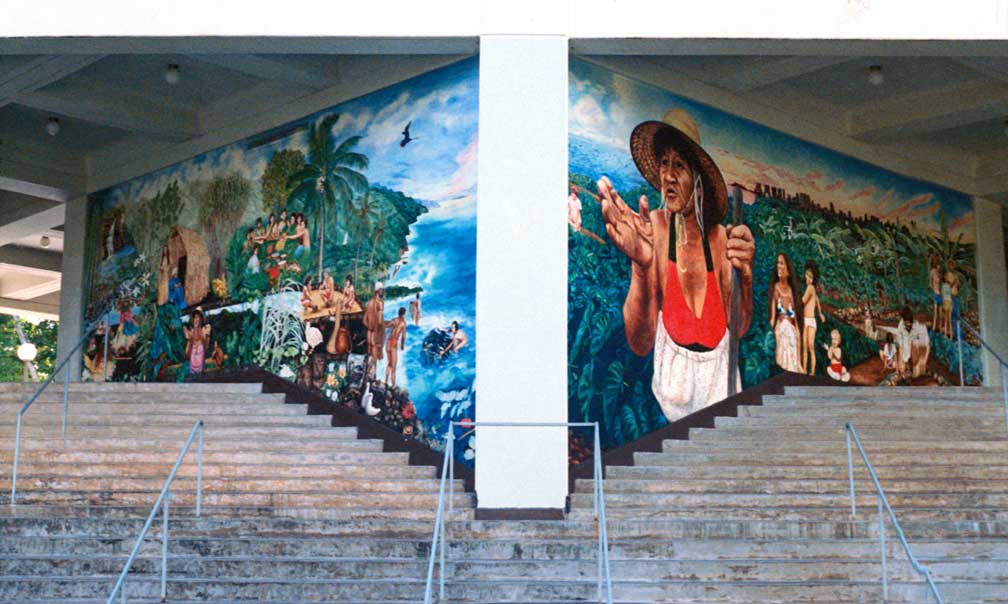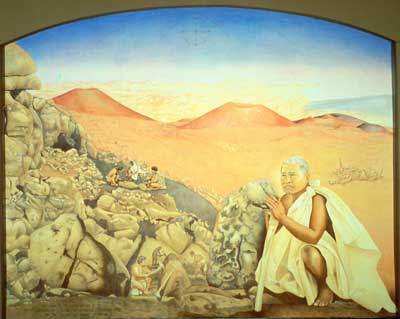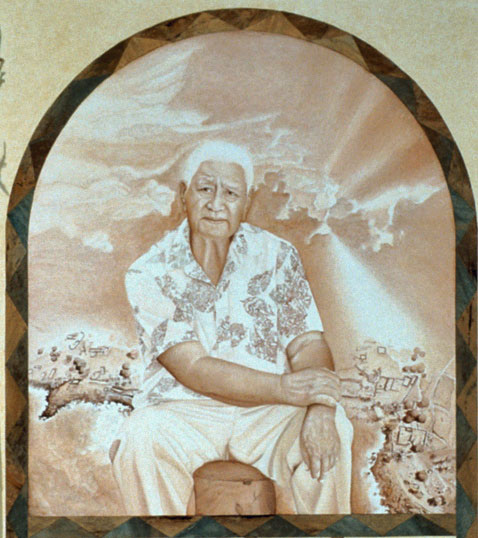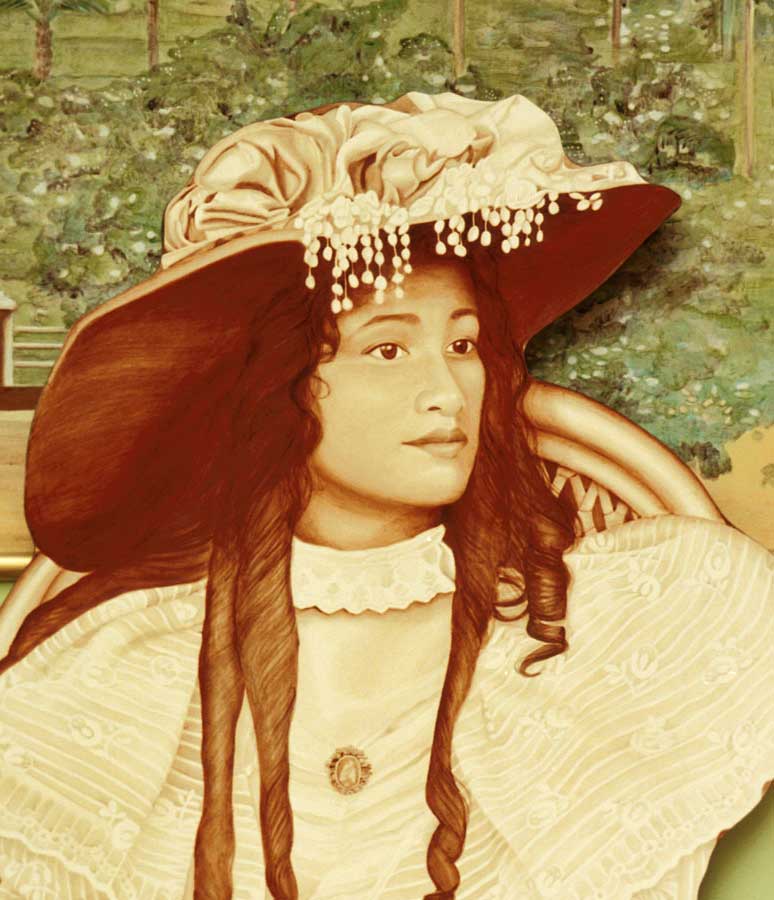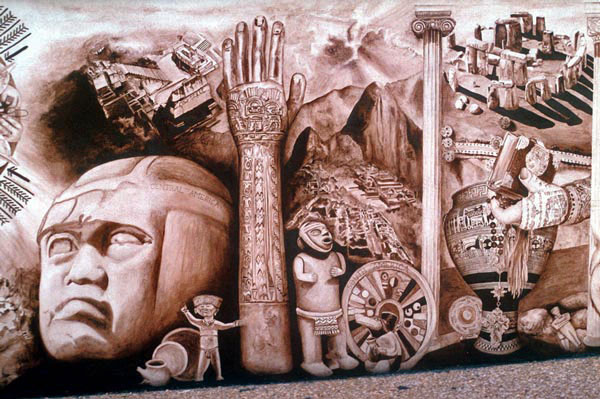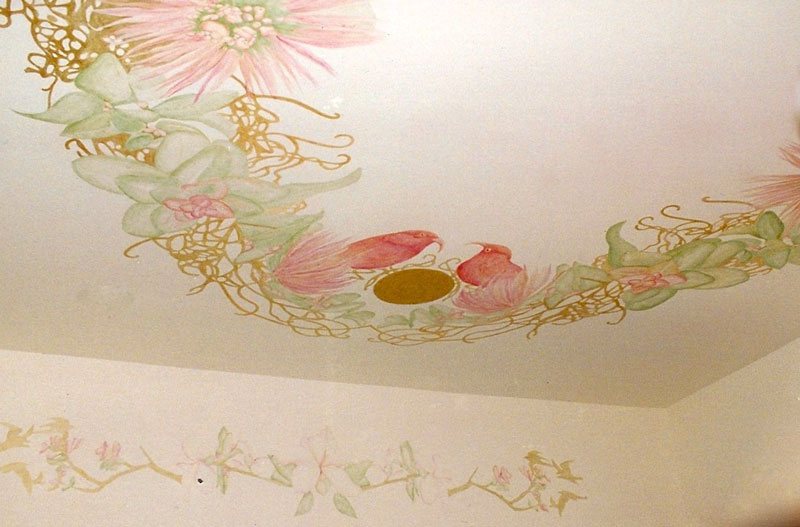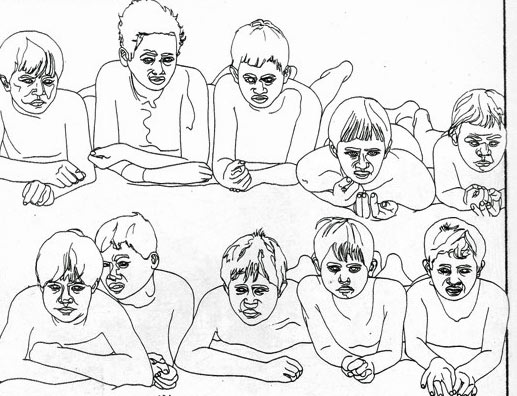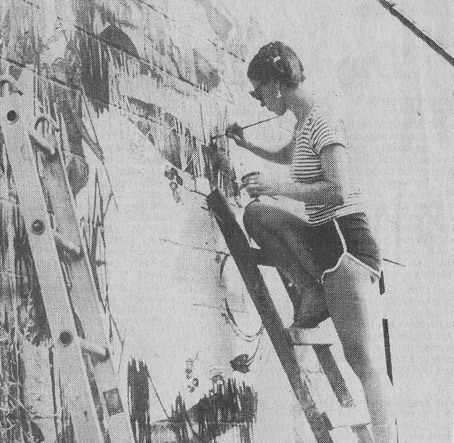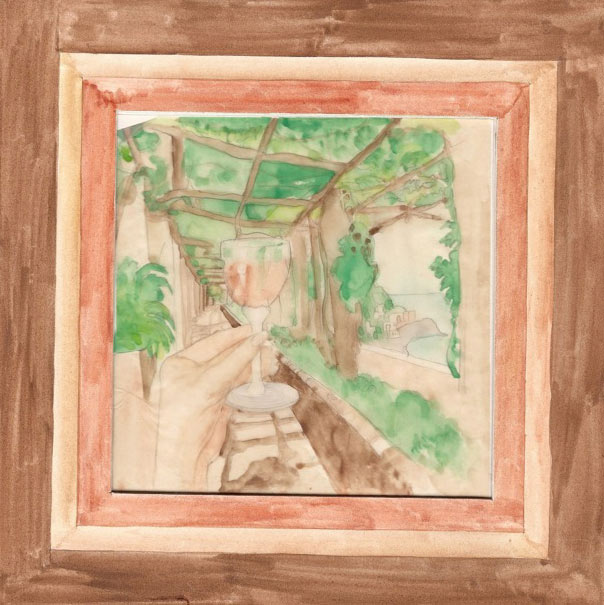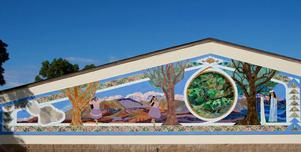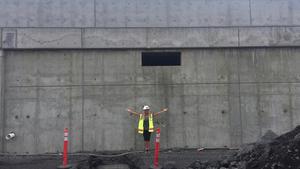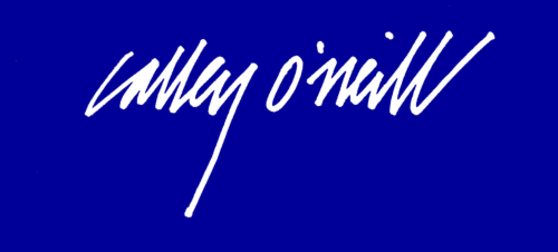Public Art & Murals
KEANAKAKO'I, 1991 (each 8’ X 10’) Politec on concrete The Kings’ Shops Living History Murals. Waikoloa Beach Resort, Hawai’i
At the time, Calley literally read everything there was to read about this ancient adze quarry, and, between the two murals, conducted 30 research consultations with living history experts in the field of life on the coast near Anaeho’omalu and adze quarry work at Keanakako’i.
Keanakako’i, a famous ancient adze quarry and Hawaiian Historic Place is located on the sacred mountain called Mauna-a-Wakea or Mauna Kea, in the Mauna Kea Ice Age Natural Reserve Area, in the District of Hamakua on the Island of Hawai’i.
THE ANNUNCIATION and THE ASSUMPTION, 2003 (each 13' by 3') Stained Glass Windows with Hand Painted Fired Details, Annunciation Church, Kamuela, Hawai'i
Along with her stained glass and mosaic partner, Lamar Yoakum (together they are Yokomo Stained Glass and Mosaic) Calley was asked to design a pair of tall slender windows for the lovely chapel: Mother Mary’s Annunciation and Mother Mary’s Assumption.
THE ANNUNICATION, 2004 (6' by 7') Exterior Politec Glaze Painting on Concrete, Annunciation Church, Kamuela, Hawai'i
Calley was honored to be asked to paint the signature front entry mural of the Annunciation for the newly built Annunciation Church. The Annunciation is the sacred moment when the Angel Gabriel appeared to the Virgin Mary in her home, proclaiming that indeed, Mary would give birth to a son, Jesus Christ. Calley loved the experience of working with Father Bob in a series of sacred murals and stained glass for the church so much that she had a sense of a new direction for her work.
THE SEA OF GALILEE 2005 (7’ X 13’) Interior Mural in Politec and pearlescent, translucent acrylic paint with interference, Annunciation Church, Kamuela, Hawai’i
Many of the most important teachings of Jesus took place on the shores of Galilee. Painting the hills and Sea of Galilee (Kinneret) in northeast Israel near the Golan Heights in the Jordan Rift Valley was a wonderful, albeit straightforward task until Calley got the impulse to paint the Christ light on the horizon. . .
THE JEWELS OF HAWAI'I, 2005 (5 ¼’ square) Public Stained Glass Window with
Fired Glaze Painting, Malama Pono Center, Kamuela, Hawai’i
Hawai’i has just two endemic species of butterflies: Pulelehua (which now is the word for all butterflies) a monarch known commonly as The Kamehameha Butterfly (Vanessa tameamea) and the second, much smaller one is the Hawaiian Blue Butterfly, also known as the Koa butterfly, or Blackburn’s little blue butterfly (Udara blackburni). Pulelo means to float or to undulate in the air, and lehua is the famous blossom of the ‘Ohia lehua tree (Metrosideros polymorpha): thus the name means one that floats through the air from one lehua blossom to another.
ANCIENT HAWAIIAN CORNUCOPIA, 2007 (6’ by 4’) Politec on Canvas,
Puakea Bay Ranch, Hawai'i
Calley had the pleasure to paint the beautiful store of nourishing food prepared and packaged in the way of the old Hawaiians. Such beauty! To the Hawaiians, beauty has so much to do with usefulness…it is a deeper and more meaningful aesthetic than prevalent in the modern culture. This appreciation of nourishment carries over to the land, and is often more beautiful than our superficially decorative landscapes. The gardens and foods of old were beautiful, especially when tended and prepared with great care for the long voyages overseas.
LAPAKAHI, CIRCA 1900, 2007 (7’ by 25’) Politec Glaze Painted Mural on Panels,
Puakea Bay Ranch, North Kohala, Hawai’i.
The village of Lapakahi, which stretches for miles along the rugged North Kohala coastline, was inhabited by early Hawaiians from the 1300’s until just a few decades ago, when drought conditions undoubtedly drove the Hawaiians to more fertile ground.
PUA KALA at PUAKEA BAY, 2007 (5’ by 22’) Stained Glass Mosaic Mural, Puakea Bay Ranch, North Kohala, Hawai'i
Curving exterior stained glass mosaic mural at Puakea Bay Ranch, Lands of Puakea and Honoipu, in North Kohala on the Island of Hawai’i. The work was done in collaboration with Calley’s stained glass and mosaic partner, master artisan Lamar Yoakum (CalleyOneillStainedGlassandMosaic.com)
KIPAPA and THE PATH of LIGHT, 2013 (18' by 14') Stained Glass Mosaic Mural, Kipapa Elementary School, Mililani, Oahu, Hawai’i
KIPAPA and THE PATH of LIGHT, 2013, (18’ by 14’) is a landmark stained glass mosaic wall on Kipapa Elementary, the oldest elementary school on Oahu. KIPAPA and the PATH of LIGHT was designed to uplift the students, staff and community. The mosaic has tight spacing, cut as if it were a Tiffany-style window, with fine handmade glass in golds, browns, greens and blues. The background of the kukui quilt mandala was cut in iridized gold on amber glass.
THE BUTTERFLIES OF HAWAI'I, 2005 (8’ X 12’) Exterior Glaze Painted Relief Mural, Politec on Panels Relief Malama Pono Center, Kamuela, Hawai'i
Very few individuals in the world have ever glimpsed Hawai’i’s only two endemic butterflies. Included in the painted relief are all 16 butterflies that live and thrive here. “It is my hope that these works of art will bring awareness and appreciation to these delicate and magnificent Hawaiian treasures, and joy and inspiration to those who see it.”
Email Calley: Calley@CalleyO'Neill.com
NĀ WAO OLA AʻO PIʻILANI - THE LIFE GIVING FORESTS OF MAUI, 2016, (11' x 52') Stained Glass Mosaic Mural, Pukalani Elementary School, Pukalani, Maui, Hawai'i
Lilinoe, the waters of life, and the mighty koa have an important story to share. The waters that sustain your life do not come from the rain! They come from the clouds, which come from the forests. This mural is a call to action to rekindle aloha ʻāina and restore the forests that bring forth the waters of life. Hahai nō ka ua i ka ululā‘au. — The rain follows after the forest. Destroy the forest, the rains will cease to fall, and the land will become a desert.
"It will be art that exponentially expands the reach of this knowledge."
Legendary Conservationist, Edward O. Wilson to Calley O’Neill
E MAU NA WAIWAI O HAWAI'I, 1992 (each 8’ X 10’) Politec Glaze Painting on Concrete, The Kings’ Shops Living History Murals, Waikoloa Beach Resort, Hawai’i
E Mau Na Waiwai O Hawai’i means: May the Ancient Ways and the Timeless Wisdom of Old Hawai’i Live On and On and On. This mural gives a glimpse of coastal life in pre-contact Hawai’i at Anaeho’omalu Bay, circa 1400, based on the artist’s intensive research, archeological reports and stories from thirty Hawaiian history and cultural experts. It remains for another time to transcribe the 150 pages or so of notes on life in old Hawai’i resulting from these research consultations, ranging from Grandma La’au’s detailed description of drying opelu to Ski Kwiatkowski’s expert talk on stone, petroglyphs, the adze quarry, and more...
‘OHIA LEHUA LEI ALOHA, 1992 (12’ by 16”) Politec and Gold Acrylic, Ceiling Mural, Private Residence, Puako, Hawai’i
Only once thus far did Calley design and paint a ceiling mural.
This design derives from the patrons' love of Hawai’i, leis and the beloved blossoms of the ‘ohi’a lehua tree (Metrosideros polymorpha) from the uplands. The ‘ohi’a lehua forms the basis of the lei, along with Kauna’oa (Cuscuta sandwichiana) an unusual, golden ocre colored trailing parasitic vine with leafless stems that range from yellow to yellow-orange from the coastline. Kauna’oa is the flower for the island of Lana’i. In season, it is visually predominant on Mauna Kea Beach on Kaunaoa Bay on the Big Island. Twisted Kauna’oa leis are rare and lovely.
PO'OKELA KAHUNA LA'AU LAPA'AU O HAWAI'I PAPA HENRY ALLEN AUWAE,
1997 (6’ X 4’) Bamboo Framed Mixed Media Portrait Commissioned by Dr. Earl Bakken for North Hawai’i Community Hospital, Kamuela, Hawai’i.
Calley had the honor of studying La’au Lapa’au (traditional Hawaiian herbal medicine) as an apprentice for two years with Po’okela Kahuna La’au Lapa’au O Hawai’i Papa Henry Allen Auwae (the head holder of the knowledge of herbal medicine) known to everyone simply as Papa. This was the only class that Papa ever taught in la’au lapa’au, and interested people of many races and ages were called to their highest focus for the intensive two-year course.
THE MADONNA AND CHILD, 2003 (3 ½’ X 3’) Stained Glass Window with
Hand Painted Fired Details, Annunciation Church, Kamuela, Hawai’i.
One of the most popular images painted and sculpted in the Christian world is the Madonna and Child. Madonna is the word in Italian that means 'my lady'. In art, this refers specifically to a painting or sculpture that shows Mary holding the infant Jesus as the central focus. Throughout time and place, many renowned artists have depicted the Madonna and Child. Among the most famous artists are Leonardo da Vinci, Michelangelo, Giovanni Bellini, Caravaggio and Rubens. The tradition continues, with contemporary masters such as Salvador Dali and Henry Moore.
THE VISITATION, 2004 (2 X 6’) Exterior Front Entry Mural, Politec Glaze Painting
on Concrete, Annunciation Church, Kamuela, Hawai’i
Calley was honored to be asked to paint another front entry mural above the pass-through at Annunciation Church, Waimea, Hawai’i. Father Robert Wynne asked Calley to portray The Visitation. Folks who know her will recognize Calley's daughter Leianna as the model for Mary.
HAWAIIAN NATIVE BUTTERFLIES, 2005 (10’ X 20’) Exterior Relief Mural,
Politec on Panels, Malama Pono Center, Kamuela, Hawai'i
Hawai’i has just two endemic species of butterflies: Pulelehua (which now is the word for all butterflies) a monarch known commonly as The Kamehameha Butterfly and the second, much smaller one is the Hawaiian Blue butterfly, also known as the Koa Butterfly, or Blackburn’s little blue butterfly.
Unfamiliar to most residents and visitors, the two butterflies are forest and mountain dwellers rarely seen by anyone, save avid hikers and keen observers of nature in native upland forests.
ALOHA, E KE KOHOLA!
A MURAL CELEBRATING THE SURVIVAL OF WHALES, 1988 (12’ x 17’)
Mixed Media Mural, Hawai’i Maritime Center, Pier Seven, Honolulu, Hawai'i
Aloha, e Ke Kohola! is, at once, a memorial to commemorate the millions of great whales who have perished, and a celebration for those who have indeed shown hopeful signs of thriving.
Happily, the mural in progress was a revelation for the artist, quite magically revealing itself to her, and thus to you. The artist dove into the project as if into a pool, only to find herself seeking to understand a realm as deep and mysterious as life itself.
CLASSICAL ITALIAN RENAISSANCE STUDIES, 1988 (approximately 7’ x 7’ each) Studies from Michelangelo’s Sistine Chapel Ceiling and Classical Italian Renaissance Studies, Trattoria Restaurant, Honolulu, Hawai’i
Imagine the joy of drawing and painting studies of some of the most beloved classical Italian Renaissance masterpieces on a large scale! “It was an amazing experience," says artist Calley O’Neill. Calley was painting her mural across the street on the Reef Hotel (a two-year long effort) when restauranteur Fred Livingston walked over and said, “Your work is beautiful. I need an Italian Renaissance study done before Christmas (10 days away) on a new wall at Trattoria. . .”
ORIGIN OF THE WORK OF ART, 1985 (approximately 3’ X 18’) Reef Hotel, Honolulu, Hawai'i
The circle, ultimate and universal symbol of perfection and the eternal, is the foundational shape for many early visual art forms from all around the world. This mural travels around the world to highlight an example of the mandala (circular) form in art, craft and architecture.
THE THREE HAWAIIAN GRACES, 1988 (6’ by 4’) Politec Glaze Painting on Panel,
The Hilton Waikoloa, Waikoloa Beach Resort, Hawai’i
While painting seven large classical Italian Renaissance studies, including Botticelli’s Three Graces at Trattoria Restaurant in Waikiki on the island of O’ahu, Calley kept 'seeing' a Hawaiian Three Graces (ah, the muses!). Immediately upon completion of the Trattoria works, Calley was commissioned by Hilton Waikoloa Village Hotel to paint THE THREE HAWAIIAN GRACES for their permanent collection. Guests and locals have often reported this painting to be a favorite in the hotel's mile-long museum walkway.
A VILLAGE WHERE DREAMS ARE MADE, 1988 (5’ X 5’) Front Entry Painting
Matteo’s Restaurant, Honolulu, Hawai’i
This painting shows a trio of grape harvesters traversing down a steep hill in Italy headed toward their picturesque village below. Their baskets are overflowing with plump, juicy purple grapes, fresh from the harvest.
TAKING THEIR PROPER PLACE IN HISTORY, A MURAL ON THE CRAFTSPEOPLE OF HAWAII, 1985 (approx. 8’ x 12’ ) Reef Hotel, Honolulu, Hawai'i
This is a detailed mural depicting and honoring the wonderful craftspeople of Hawai’i, including kapa cloth making, carving, lei making, musical instrument making, feather working, quilting and planting. The work derived from intensive research and oral history interviews with craftspeople, Hawaiian cultural experts and Bishop Museum traditional Hawaiian craft teachers.
BOYS ON THE BEACH, 1985 (4’ by 18’) Politec Monochromatic Glaze Painting in Burnt Umber, Reef Hotel, Honolulu, Hawai’i
While you can see the original line freehand line drawings of this mural, unfortunately, Calley did not record her earlier works, so no photographs exist to her knowledge. The boys were painted from two amazing photographs of boys on the island of Kaua’i nearly one hundred years ago by famed photographer Ray Jerome Baker (1880 – 1972).
HAWAI'I KA'U KUMU - HAWAI'I IS MY TEACHER, A MURAL ON THE SPIRIT OF GROWTH AND LEARNING THEN AND NOW, 1982 (16’ X 27’ each) Politec Acrylic Glaze Painting on Exterior Concrete Walls. The University of Hawai’i’s 75th Anniversary Murals, Campus Center, University of Hawai’i at Manoa, Honolulu, Hawai’i
This was Callley's first major public commission in Hawai’i. It was an intensive two-year journey of study, research, experience within the Hawaiian culture, hula, work with many apprentices, and thousands of hours of painting. This study became the foundation of all of her work in Hawaiian cultural murals and mythological paintings.
THAT'S THE WAY OF THE WORLD, A MURAL ON THE HISTORY OF AGRICULTURE IN THE UNITED STATES, 1978 Politec on concrete (7,000 sq. ft. Goddard College Master’s degree project in collaboration with twelve local artists) The Community Self Sufficiency Center, Hewett, New Jersey, Director’s Discretionary Grant, N. J. State Council on the Arts
This 7,000 square foot mural was a whale of a first effort in Calley’s quest to become a public artist. Driven by her growing desire to make a difference in the world, fueled by her intensive studies of the Mexican mural masters, and prompted by a big request from a friend, she was off and running.
 | ||||
MALAMA 'AINA ELLISON ONIZUKA KONA INTERNATIONAL AIRPORT AT KEAHOLE
CALLEY O'NEILL STAINED GLASS MURAL
This epic 300’ long highly public new Kona airport mural wall will be comprised of eight recessed 12’ by 40’ panels and will be guided by highly respected kupuna (wise elders, wisdom carriers) sharing a message that is essential for the world:
TAKE CARE OF THE LAND!
TAKE CARE OF THE OCEAN!
TAKE CARE OF THE FUTURE GENERATIONS!
E KOMO MAI, 1989 (54’ X 17’ triangle) Exterior Front Entry Mural in Politec on
Primed Wood, The Lodge at Koele, Four Seasons Resorts Lanai, Lanai City, Hawai’i
Working very closely with the former Island of Lana’i owner, CEO and President of Castle & Cooke, Inc. David H. Murdock and his Senior Vice President in architecture, Arnold C. Savrann, Calley painted the front entry to the Lodge at Koele, 55’ long and 55’ above the ground at the pinnacle.
The pineapple is an international symbol of hospitality. Pineapples also dominated the landscape and the economy of Lana’i for decades before giving way to tourism through the Four Seasons Resorts.
ODE TO A PRINCESS, 1989 (11’ X 55’) Mixed Media Relief Mural With Monochromatic Glaze Painting in Burnt Sienna on Cut 1” Thick Gatorfoam with Koa Edges, Industrial Cardboard Columns and Painted Wood, Dole Cannery Square, Pineapple Playhouse Honolulu, Hawai’i
This mural depicts an elegant Honolulu family during the monarchy period, second half of the 19th century. The Hawaiian monarchs toured the United States and travelled extensively in Europe, observing the lture and cuarchitecture of kings and queens around the world. The Hawaiian kings constructed Neoclassical and Gothic revival style buildings to house their courts, government bodies and cultural treasures.
Art and Soul for the Earth
Big Island of Hawai'i
